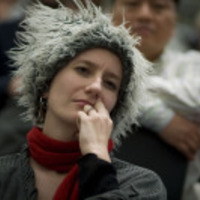
Robert Kozinets
Robert V. Kozinets is an academic innovator who has developed important methods and theories that are widely used around the world. In 1995, he invented netnography, an application of cultural anthropology to digital networks. Since that time, he has applied, developed, written about, and taught digital research methods and branding theories to academics as well as to companies like AMEX, TD Bank, Campbell Soup, L’Oreal, Merck, and many others. His work on netnography has spawned thousands of academic research articles and papers, and hundreds of market research studies. His work has been cited almost 14,500 times according to Google Scholar. His publications include over 150 articles, chapters, case studies, videographies, and research poems as well as a textbook and four books. Currently, Kozinets is Associate Editor of the Journal of Consumer Research and the Journal of Retailing, an Academic Trustee of the Marketing Science Institute, and is the Industry seat on the Board of Directors of the Association for Consumer Research. He is the Jayne and Hans Hufschmid Chair of Strategic Public Relations and Business Communication at University of Southern California’s Annenberg School for Communication and Journalism, a position he shares with the USC Marshall School of Business.
Address: Annenberg School for Communication and Journalism
3502 Watt Way, #201A
Los Angeles, CA
Address: Annenberg School for Communication and Journalism
3502 Watt Way, #201A
Los Angeles, CA
less
Related Authors
Noel B. Salazar
KU Leuven
Sarah Pink
Monash University
Josiah Heyman
University of Texas at El Paso (UTEP)
S B Rodriguez-Plate
Hamilton College
Stanislav Ivanov
Varna University of Management
Mark Sedgwick
Aarhus University
danah boyd
Microsoft Research
Steffen Boehm
University of Exeter
David Seamon
Kansas State University
Suzanne Newcombe
The Open University
InterestsView All (34)










Uploads
Books by Robert Kozinets
“engagement” in the business education and consultancy market, consumers of products as mundane as tortilla chips have been conceptualized, albeit with some success, as rabid fans. Through the scientizing of studies of fan culture, and cultural studies, more about fan consumption has been understood and applied by marketing managers in the last decade than ever before. In addition, as exemplified by Facebook “fan” pages for every consumer product imaginable, the Internet itself has been marshaled as a community forum for turning consumers into “rabid fans.” Charting the rise of “fan” terminology in business literature, management practice, and Internet offerings, this chapter explores how, why, and to what effect consumers have been turned into “fans.” It offers conclusions about where this leaves television producers, brand managers, fans and consumers, and those who are interested in conceptually understanding their worlds.
every color, or nothing at all? Where can you find hundreds of art cars and extraordinary vehicles, from star-lit UFO taxicabs to mobile taxidermied horses, giant glowing lobsters, Viking ships, or enormous flame-belching dragons? Where can you find endless miles of participatory ‘theme camps’—with names like Astral Headwash, Lingerie Planet, Mad Cow Country Club, Technofartz Camp, Porn Star Lounge and the Temple of Atonement—where festival-goers artfully offer up to one another a bizarre concatenation of spiritual and carnal sustenance and
smart, regressive, pop-culture-inundated, ironic fun? Dozens of radio stations? An immense range of art, from massive sculptures made of books to digital kaleidoscopes? Where? You can find them about 120 miles east of the city of Reno, in the middle of the desert near the center of the state of Nevada, in the United States of America. For one week every year, you can find this combination of unparalleled weirdness and breathtaking inspiration at Burning Man, and at no place else on Earth.
Papers by Robert Kozinets
“engagement” in the business education and consultancy market, consumers of products as mundane as tortilla chips have been conceptualized, albeit with some success, as rabid fans. Through the scientizing of studies of fan culture, and cultural studies, more about fan consumption has been understood and applied by marketing managers in the last decade than ever before. In addition, as exemplified by Facebook “fan” pages for every consumer product imaginable, the Internet itself has been marshaled as a community forum for turning consumers into “rabid fans.” Charting the rise of “fan” terminology in business literature, management practice, and Internet offerings, this chapter explores how, why, and to what effect consumers have been turned into “fans.” It offers conclusions about where this leaves television producers, brand managers, fans and consumers, and those who are interested in conceptually understanding their worlds.
every color, or nothing at all? Where can you find hundreds of art cars and extraordinary vehicles, from star-lit UFO taxicabs to mobile taxidermied horses, giant glowing lobsters, Viking ships, or enormous flame-belching dragons? Where can you find endless miles of participatory ‘theme camps’—with names like Astral Headwash, Lingerie Planet, Mad Cow Country Club, Technofartz Camp, Porn Star Lounge and the Temple of Atonement—where festival-goers artfully offer up to one another a bizarre concatenation of spiritual and carnal sustenance and
smart, regressive, pop-culture-inundated, ironic fun? Dozens of radio stations? An immense range of art, from massive sculptures made of books to digital kaleidoscopes? Where? You can find them about 120 miles east of the city of Reno, in the middle of the desert near the center of the state of Nevada, in the United States of America. For one week every year, you can find this combination of unparalleled weirdness and breathtaking inspiration at Burning Man, and at no place else on Earth.